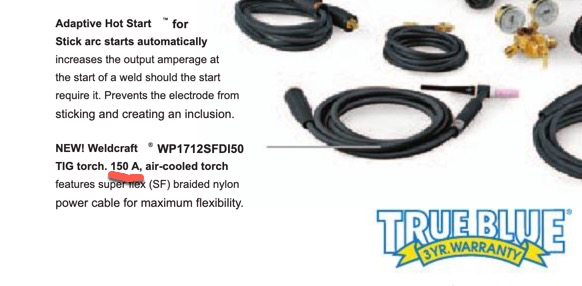Ignorant question here...when they use a number as 210 in the name of the welder as in " Hobart2 210MVP" does that mean anything in regards to welding amps? I have seen the Hobart 210MVP mig welder advertised as having 210 Amp but the seemingly more accurate descriptions I've read on it indicate only 150 amps. I have a little 115 volt mig welder that uses the model name "135e" and I was originally under the impression that it could weld with 135 amps but in fact in will only do 80 amps max. What gives? Is that just marketing BS or am I not understanding something?
You are using an out of date browser. It may not display this or other websites correctly.
You should upgrade or use an alternative browser.
You should upgrade or use an alternative browser.
Welder amp ratings
- Thread starter DPittman
- Start date
@CalgaryPT explained this to me already. I can't recall what thread it was in though.
Oops I'll go looking thanks.@CalgaryPT explained this to me already. I can't recall what thread it was in though.
Oops I'll go looking thanks.
It was quite some time ago, it might be hard to find.
Tom Kitta
Ultra Member
Sometimes the name has amps in the lowest duty cycle possible in most amp intensive mode of the welder. Usually professional grade welders use 60% duty cycle amps in highest amp mode of welding to give them a name. For example Miller 200DX, AFAIK will be able to do 200 amps TIG at 60% duty. Or at least my clone does that. Stick is limited to 160amps.
Non professional welders are all over the map and cheap china can sometimes lie a lot - like even display 200 amps but deliver 100.
Non professional welders are all over the map and cheap china can sometimes lie a lot - like even display 200 amps but deliver 100.
You're right, I can't find it. But I did read some other good welder info in my questIt was quite some time ago, it might be hard to find.
Former Member
Guest
Last year when I was buying my new welder the answer is yes and no.
As previously stated the number usually indicates the highest power level available, though most times at a reduced duty cycle. Light pro/better heavy duty hobby machines match this spec. As to the what that duty cycle is thats a different issue.
Some brand names are expensive and are no better than the identifiable imports. Additionally they (brand names) are likely made off shore as well and not made to the same spec of old.
Now duty cycle only becomes important when you need a longer weld time. In all my years with the mig have I only trip the temp overload 3 or 4 times total and in most cases far exceeded the duty cycle (cheap Princess Auto 240V unit, even at low power it had a duty cycle). Hot days make it worse, cold freezing are to your advantage.
Worry less about the numbers in the name (remember marketing is about sorta telling the truth....well ok lying), read the spec sheet and go from there (and hope it was written by an honest engineer).
My current machine has 100% where I use it, that what counts. From my research any of the better (imports or otherwise) machines now are about 150+/-amps @100% get up to at least 200amps at a reduce cycle, modern technology has allowed that. The second limiting factor is power source 120vac will not get you that high, this only happens if the machine runs at 240vac on a 40-50amp breaker.
As previously stated the number usually indicates the highest power level available, though most times at a reduced duty cycle. Light pro/better heavy duty hobby machines match this spec. As to the what that duty cycle is thats a different issue.
Some brand names are expensive and are no better than the identifiable imports. Additionally they (brand names) are likely made off shore as well and not made to the same spec of old.
Now duty cycle only becomes important when you need a longer weld time. In all my years with the mig have I only trip the temp overload 3 or 4 times total and in most cases far exceeded the duty cycle (cheap Princess Auto 240V unit, even at low power it had a duty cycle). Hot days make it worse, cold freezing are to your advantage.
Worry less about the numbers in the name (remember marketing is about sorta telling the truth....well ok lying), read the spec sheet and go from there (and hope it was written by an honest engineer).
My current machine has 100% where I use it, that what counts. From my research any of the better (imports or otherwise) machines now are about 150+/-amps @100% get up to at least 200amps at a reduce cycle, modern technology has allowed that. The second limiting factor is power source 120vac will not get you that high, this only happens if the machine runs at 240vac on a 40-50amp breaker.
When I was assessing my 220v 40A breaker panel limits in terms of welder limits. (like why buy a 250 when all I could run was a 200 etc.) Just as an example, someone helped me interpret the specs, but obviously the dog ate my homework, its mostly all now forgotten. Anyways, shows current levels at various duty cycles & also as a function of line voltage if that's an issue.
I think the important one (for me) was 'maximum in-rush current'. Not quite sure if in real life that means max welder amp setting + full pedal stomp? But my simple brain says 29A on 40A breaker = good vs 29A on 15A breaker means lights out. is that the gist of it?
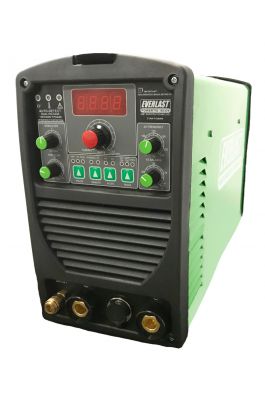
 www.everlastwelders.ca
www.everlastwelders.ca
I think the important one (for me) was 'maximum in-rush current'. Not quite sure if in real life that means max welder amp setting + full pedal stomp? But my simple brain says 29A on 40A breaker = good vs 29A on 15A breaker means lights out. is that the gist of it?

PowerTIG 185DV
Recommended Areas Of Use: Portable Repair Light Production/Fabrication Farm/Ranch Hobby/DIY Farm Motorsports/Off road Recommended Metals: Aluminum Titanium Nickel Virtually all metals
That's not ignorant at all. You're just using your brain, so stop that...marketers will unfriend you.Ignorant question here...when they use a number as 210 in the name of the welder as in " Hobart2 210MVP" does that mean anything in regards to welding amps? I have seen the Hobart 210MVP mig welder advertised as having 210 Amp but the seemingly more accurate descriptions I've read on it indicate only 150 amps. I have a little 115 volt mig welder that uses the model name "135e" and I was originally under the impression that it could weld with 135 amps but in fact in will only do 80 amps max. What gives? Is that just marketing BS or am I not understanding something?
The short answer is it is mostly marketing as you suspect. There's a long answer that involves Tier 2 and 3 welder manufacturers copying the naming conventions of the big boys to try to compete, and then there's another longer answer involving duty cycles as mentioned by @Tom Kitta. Years ago I took a deep dive into this and found some Tier 3s had specs that said things like "150 Amps @ 20.5% duty cycle"—so they were obviously recalculating the ratio just so they could put 150 Amps on the outside of the box. With those kind of ethics I'll bet they put three exclamation marks after the claim as well.
Even Miller plays games. Take the Syncrowave 200. If you look at their sell sheets it says Amperage Range, not Amperage. In other words, you can adjust the potentiometer to 200 Amps, but that doesn't mean you can get that as an output current. In fact if you look at the curve in their own literature (buried at the end of course) it even shows you how voltage dramatically drops off at 200 Amps.
For brand loyalists, it is always tempting to let your mind think, "Oh, I'm sure they are being honest" because, let's face it...that shiney new blue (or red) box looks so darn nice. But look just a little further and there is a telltale sign it ain't routinely spitting out 200 Amps: it comes with a 150 Amp torch (exclamation mark here if I believed in them).
So your instinct is right. It generally is marketing. If we were being nice we would say it's a stretch objective—kind of like my 1988 Chevy Cavalier's speedometer went to 120 MPH.
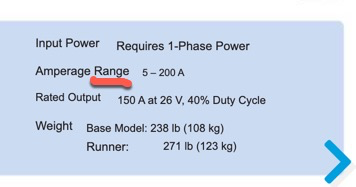
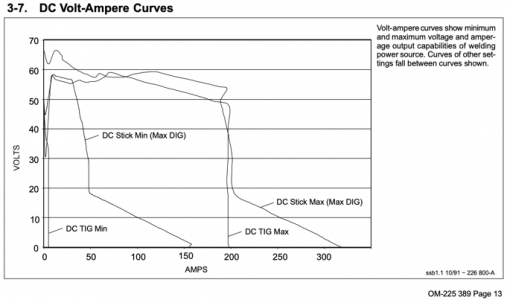
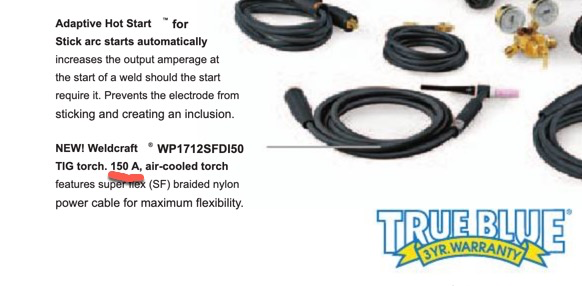
Attachments
Last edited:

